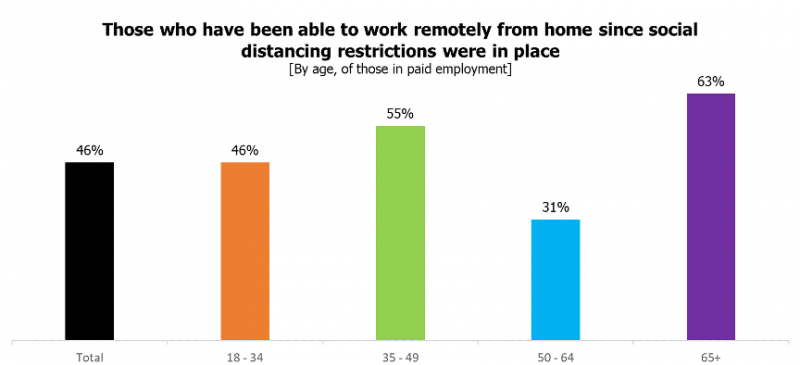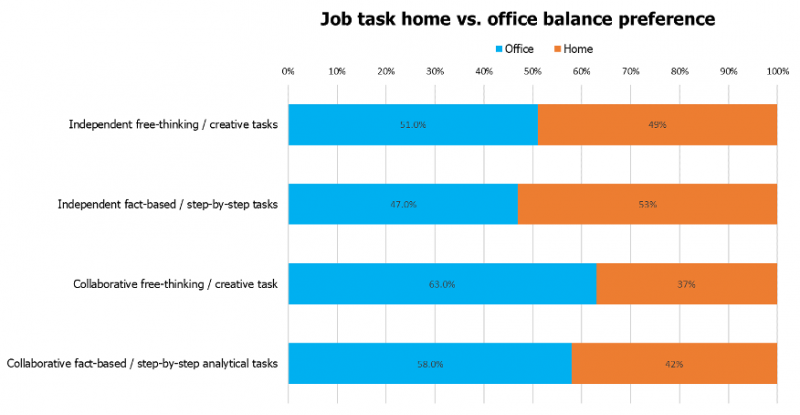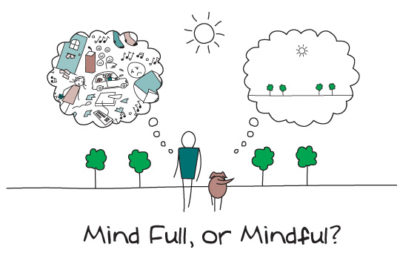Work from home, here to stay
As reported by Square Holes back in May, South Australian were quite enjoying working from home, and this has continued in results collected at the end of July / early August.
Of the 52% of South Australians indicating they are currently in paid employment (33% full-time and 19% part-time), just under half (46%) are able to work from home. Only a small proportion of South Australians aged 65+ are in paid employment (4% full-time and 8% part-time), yet of those that are 63% are able to work from home and are doing so majority of their week. This may be based on the nature of the work of older South Australians.

More males in paid employment than females have been able to work from home since social distancing restrictions were in place (54% of males vs 37% of females). Working from home is also more prominent for metropolitan Adelaide workers, compared to regional workers (48% metro Adelaide vs 37% of regional SA).
On average of those able to work from home have been working 26 hours in a 40 hour week (64%) from home. For many working from home isn’t new, with an average of 15 hours in a 40 hour week (37%) being from home pre-COVID. The proportion of time working from home increases with age.

It is interesting that working home is becoming more natural for many irrespective of independent tasks of collaborative. In Square Holes’ May work from home research, there was a clear difference between independent tasks and collaborative tasks, with a clearer preference for independent tasks at home (around 60-75% on average) and collaborative in the office (around 65% on average). In the latest survey there is a 50:50% balance for independent and collaborative tasks. Clearly Zoom, Teams and other video meeting tools are becoming more natural to many.

As was recorded in the May research, there is a preference skew towards working from home if it is available. In May the average percentage of work from home was 58% for those in paid employment able to work from home, in July it was 59%. This is generally consistent across age group, yet much higher amongst the relatively small number of 65+ year olds in paid employment.
Males in paid employment able to work from home had a slightly higher preference towards work from home than females (62% average work from homes for males vs 56% females), and metropolitan Adelaide was higher than regional areas (61% metro Adelaide vs 49% regional SA).
Likely one of the biggest impacts of COVID-19 has been a preference shift and normalisation of work from home. As many employers increase calls to bring staff back to the office more permanently, they will likely be hit with resistance. Clearly there is a preference towards work from home. With organisations such as Australia’s biggest recent tech success Atlassian publicly telling employees they can work from home forever, the nature of workplace culture and geographic base starts to crumble. Such a shift in thinking may be challenging for many leaders, yet opportunity may come from leveraging South Australia’s wonderful lifestyle as a base for optimal home and office balance.




